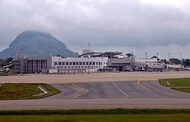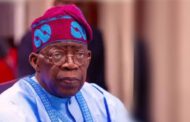Who do you think pays the eye-watering salaries earned by players in England’s Premier League, the Spanish LaLiga or Italian Serie A? It is not the clubs, but fans in those countries and around the world.
Wondering how? Here is it. The Premier League, the world’s favourite football league, for example, is broadcast in 212 countries to an estimated 4.7 billion people.
The 2016/17 season was the first in the current three-year broadcasting deal, which gives the Premier League £8.3 billion in television rights, with £5.41 billion of that coming from two UK broadcasters, Sky and BT.
It means clubs have larger sums to spend on players, who are earning bigger wages, and are less dependent match day income.
To cover the cost of the sum paid for the deal with the Premier League, Sky and BT jacked up prices by about 10% in 2016, meaning that the cost to the subscriber went up.
The two broadcasters were simply responding to the 71% jump over what was paid for the previous television deal. So, whatever commercial progress the clubs are making is at a cost, which is eventually passed on to fans around the world by television companies broadcasting matches of the Premier League everywhere in the world.
Being a red-hot property, a jewel in the Pay TV crown, rights to air Premier League matches are unlikely to attract lower sums when next they are up for renewal.
In fact, they will attract higher sums. Live sport, in general, is hot, hot property. The cut-throat competition for the acquisition of rights to broadcast or redistribute live sport content is unsurprisingly accompanied by stratospheric hikes prices demanded by content owners.
It is the same for content in other genres- movies, general entertainment, documentaries, kiddies’ content et al.
Being part of the global Pay TV landscape, operators in Nigeria are similarly victims of tough negotiations and astronomical content prices as operators in Europe, the US and Asia.
A big portion of the monthly subscription the consumer pays is comprises costs that Pay TV companies, which are essentially distributors or vendors, are required to pay to content creators or those that package Pay TV channels.
It means that for every household receiving that package, whether or not anyone in the household watches the channel, Pay TV providers pay a fee.
Content rebroadcast agreements usually contain clear and stringent rules on how content owners want their television shows and channels should be sold to viewers.
Content owners determine, for example, what packages can contain their channels. With content costs almost always denominated in the US dollar, Euro and the British pound, it is not possible for Pay TV subscription in Nigeria to remain the same for long, especially with the volatility of the exchange rate of the Naira to the aforementioned international currencies.
Even then, Pay TV prices in Nigeria are not anywhere near the steepest in the world as many often suggest. A look at the recent price adjustments made by MultiChoice on its DStv platform provides a confirmation. Under the company’s new price regime, the DStv Premium package, which currently costs N14, 700 will from 1 August rise to N15, 800.
Price of the DStv Compact Plus package has also been slightly bumped up from to N10, 650 from N9, 900. The Compact package, which currently costs N6, 500, will rise to N6, 800.
Prices of the Family and Access packages will equally go up to N4, 000 and N2, 000 respectively from the N3, 800 and N1, 900 currently being paid. Compared to the company’s new rates in Ghana, MultiChoice subscribers in Nigeria can have few complaints.
The West African country’s Premium subscribers will henceforth pay GH 365 (N27, 360.75), while those on Compact plus will pay GH 245 (N18, 365.44). Compact and Family subscribers in Ghana will pay GH 149 (N11, 169.18) and GH 85 (N6, 961.60) respectively.
South African subscribers of the company, erroneously viewed as sacred cows, will pay R809 (N21, 728.47) for Premium, R509 (N13, 670) for Compact Plus, R385 (N10, 340.49) for Compact, R249 (N6, 687.75) for Family and R99 (N2, 656.98) for Access respectively.
Similarly in Europe and the Americas, Pay TV subscribers pay more than Nigerians. In the US, Pay TV operator, Direct TV’s two biggest packages cost $110 (N38, 710) and $60 (N21, 660) respectively. For its third biggest package, Xtra, Direct TV charges $55 (N19, 855).
Its other packages cost $40 (N14, 440), $45 (N16, 245) and $35 (N12, 635). United Kingdom’s premier operator, Sky TV, charges £79.95 (N38, 167.33) for its fullest package and £47.50 (N22, 572.97) for that next to it. The third package attracts £40 (N19, 008.82), while the three below it cost £30 (N14, 256.61), £25 (N11, 731.54) and £20 (N9, 504.41) respectively.
In Mexico, where the provider offers four packages, the costs are higher than what is paid by subscribers in Nigeria. In the Central American country, Sky TV’s topmost package costs MXN 1039 (N19, 798.52). The three others cost MXN 829 (N15, 796. 52), MXN 649 (N12, 366.93) and MXN 569 (N10, 842.50).
Contrary to the widespread belief that Pay TV prices around the world are as stable as rock in a windstorm, the fact is they rise yearly.
Analysts reckon that programming costs have risen by eight to 10 percent in each of the past four years-driven by competition for content and other economic conditions, reducing Pay TV operators’ margins and compelling them to keep hike prices to remain afloat.
Competition has been made fiercer by the rise of streaming services, which are also in the game for compelling programming, offering another outlet to content owners. When this is added to global economic conditions, prices are unlikely to stay the same.
A 2013 research by Robert Gessner of America’s Masillon Cable TV Inc., warned subscribers to expect large increases in prices.
“Wholesale costs for the lowest level of TV service will increase by 11.5% in 2014; expected to increase 400% by 2020. Wholesale costs for Basic TV will increase by 11.7% in 2014 and double by 2020. Anticipated 2020 out-of-pocket Basic Cable program cost will exceed $80/month, more than $100 retail with no equipment, premium services, Internet or phone service,” wrote Gessner.
US website, consumerreports.org, also reported that most US Pay TV operators hiked their prices in 2018, with some introducing hidden fees, with operators blaming the development on the rise in costs paid for programming.
Industry watchers also posit that addition of new features and functions to services, leading to improved subscriber experience, also contributes to the rise in Pay TV prices.
Except the astronomical programming costs miraculously slide-appreciably, too-there is no chance of Pay TV prices remaining the same for a long time.
- This article by Fashedemi, a public affairs analyst, writes from Lagos was originally titled, Why Nigerians, others pay for Pay TV














